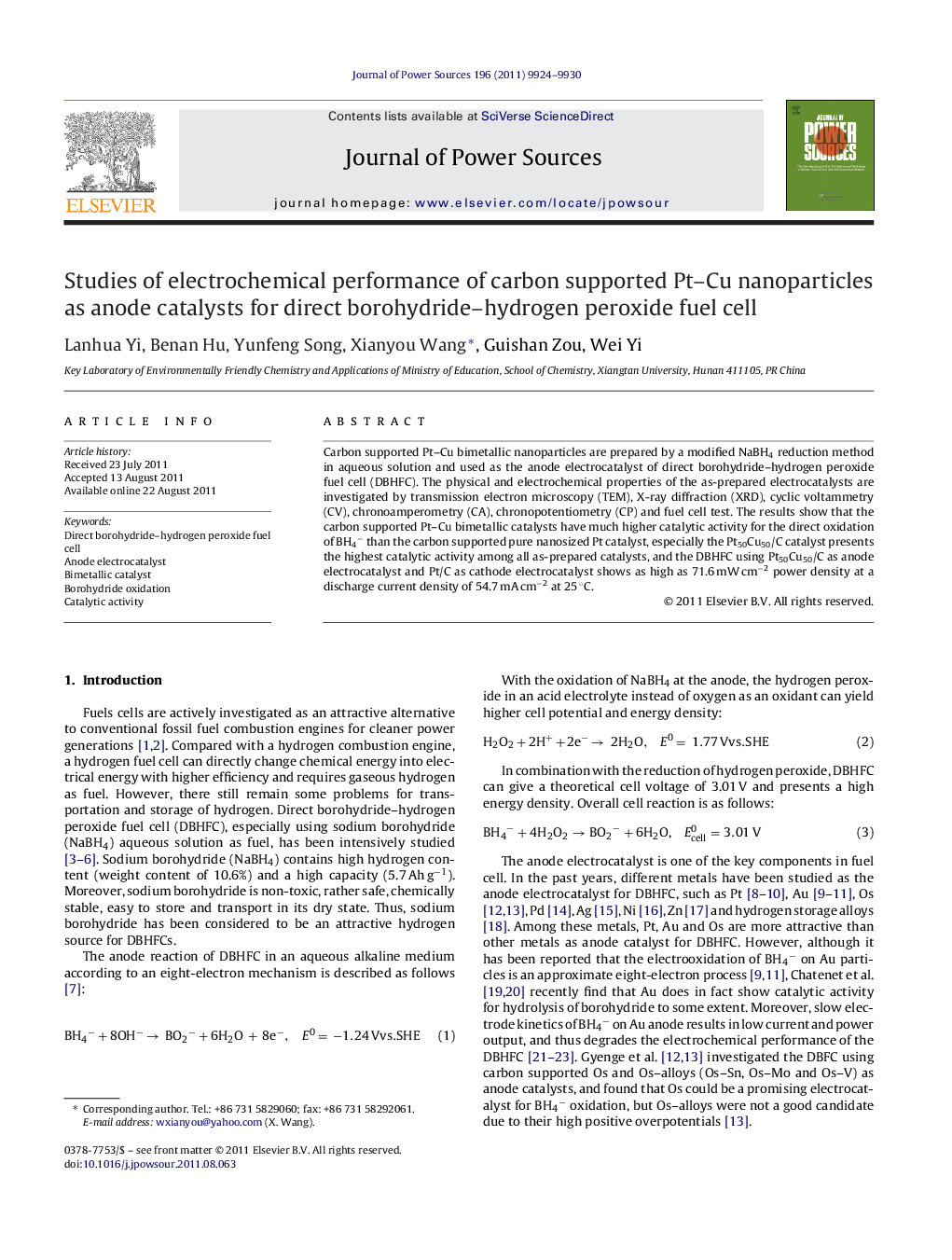| Article ID | Journal | Published Year | Pages | File Type |
|---|---|---|---|---|
| 1288650 | Journal of Power Sources | 2011 | 7 Pages |
Carbon supported Pt–Cu bimetallic nanoparticles are prepared by a modified NaBH4 reduction method in aqueous solution and used as the anode electrocatalyst of direct borohydride–hydrogen peroxide fuel cell (DBHFC). The physical and electrochemical properties of the as-prepared electrocatalysts are investigated by transmission electron microscopy (TEM), X-ray diffraction (XRD), cyclic voltammetry (CV), chronoamperometry (CA), chronopotentiometry (CP) and fuel cell test. The results show that the carbon supported Pt–Cu bimetallic catalysts have much higher catalytic activity for the direct oxidation of BH4− than the carbon supported pure nanosized Pt catalyst, especially the Pt50Cu50/C catalyst presents the highest catalytic activity among all as-prepared catalysts, and the DBHFC using Pt50Cu50/C as anode electrocatalyst and Pt/C as cathode electrocatalyst shows as high as 71.6 mW cm−2 power density at a discharge current density of 54.7 mA cm−2 at 25 °C.
► The Pt–Cu/C catalysts as anode electrocatalysts for DBHFC were synthesized. ► The average particle size of Pt–Cu bimetallic nanoparticles is approximately 3 nm. ► The Pt–Cu/C can apparently improve the catalytic activity for the electrooxidation of BH4−. ► The performance of DBHFC employing Pt–Cu/C as anode catalyst was reported. ► The maximum power density of 71.6 mW cm−2 was obtained at 25 °C.
